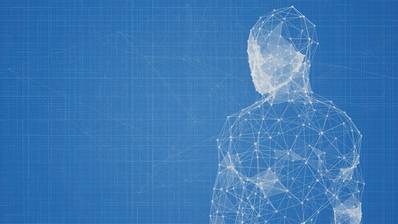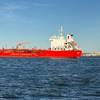AI & Machine Learning, Possible Force Multipliers for the Coast Guard
Artificial intelligence (AI) and machine learning (ML): mention these two terms and the listener may instantly think of the ads displayed as you view your favorite online news site. This is one version of what AI/ML might be. Given the state of AI and ML research today, these advanced mathematical techniques represent something the U.S. Coast Guard should explore for mission application. To do this, common definitions need to be created, challenges understood, and practical use cases examined.
It has been proven in applications within private industry and medicine that AI/ML techniques can be beneficial in predictive analytics. An example is the use of AI in enhancing accurate initial diagnosis of radiology slides; within the retail sector, AI has already been demonstrated by Amazon via customer intelligence. Ever wonder why other recommendations of items to buy are provided when you make a purchase online? This new sales tactic is a practical application of a form of these advanced mathematical techniques.
However, to present a balanced perspective, there can be significant challenges to the use of AI/ML which should not be ignored. One challenge was highlighted in an article by Michael Chui, James Manyika and Mehdi Miremadi, writing in the January 2018 McKinsey Quarterly. Noted the article, “The complication is that massive data sets can be difficult to obtain or create for many business use cases.” Another possible challenge may be in the “quality” of the data. How accurate is it? The third challenge may be the ability to transition the deliberate research to a practical application and developing all new training applications to build “hands-on” operators.
One of the Coast Guard’s primary strategic documents provides a guidepost to exploring how AI/ML might be used. From the Strategic Plan 2018-2022:
“The rapid advancement in technology across our personal and professional lives presents game-changing opportunities for the Coast Guard, if properly harnessed. To fully understand the potential impacts of emerging technologies on Coast Guard operations, we will: Evaluate emerging technologies, such as unmanned platforms, data analytics, block chain encryption, artificial intelligence, machine learning, network protocols, information storage, and human-machine collaboration for possible use in mission execution.” This simple statement underscores the importance of exploring possible applications.
To begin to understand applications, definitions and context are needed. In 1959 researcher Arthur Samuel opined that it might be possible for computers to “learn for themselves.” This was followed 34 years later with a discussion regarding “artificial intelligence” which was initiated in 1995 by Dr. John McCarthy from Dartmouth College. These actions created a framework for a definition. In addition, a Dec. 6, 2016, Forbes magazine article written by Bernard Marr provides, “Artificial intelligence is the broader concept of machines being able to carry out tasks in a way that we consider “smart.” Continued Marr, “Machine Learning is a current application of AI based around the idea that we should really be able to give machines data and let them learn for themselves.” Do you see the difference between the two terms?
Seems pretty simple on the surface.
 © ryzhi/Adobe Stock
© ryzhi/Adobe Stock
The demand signal to explore the ways that AI/ML can be used for decision making is at a fever pitch both in the United States and around the world. The U.S. and its allies are pitched in an “intellectual arms race” with China and Russia on how AI can be used. In 2018, the Department of Defense (DoD) created the Joint Artificial Intelligence Center which has leveraged a wide range of Subject Matter Experts and partnered with academics, industry, and other federal partners. A new DoD AI strategy entitled “Harnessing AI to Advance Our Security and Prosperity” was also released.
The strategy’s summary’s preface notes, “AI is rapidly changing a wide range of businesses and industries. It is also poised to change the character of the future battlefield and the pace of threats we must face.” The strategy further enforces that the research, analysis, and application of AI with the Coast Guard for different missions must be looked at as a team sport … partnerships are the key.
The strategy’s summary continues, “We cannot succeed alone; this undertaking requires the skill and commitment of those in government, close collaboration with academia and or non-traditional centers of innovation in the commercial sector, and strong cohesion among international allies and partners. We must learn from others to help us achieve the fullest understanding of the potential of AI and we must lead in responsibly developing and using these powerful technologies, in accordance with the law and our values.” The type of collaboration and partnership highlighted in the DoD strategy is equally imperative for the Coast Guard’s success in development and application of AI/ML techniques. But how does a service explore the possibilities for AI/ML application across a range of missions?
The author recommends the following four mission areas for initial exploration:
(1) Marine Safety Inspections and Port State Control Boardings: Using data from years of previous inspections, an applied AI/ML approach could potentially develop a refined process that decision makers could consider in concert with intelligence and risk models. An AI/ML application would potentially enhance the analysis efforts as tactical efforts are refined.
(2) Search and Rescue planning and execution: The Coast Guard employs a very sophisticated model for SAR planning. Its Search and Rescue Optimal Planning System has some capability to look at Course of Action development … but what if these advanced mathematical techniques could be used to refine search patterns based on past success and help decision makers consider the best asset combinations?
(3) Oil Spill Response: As far back as 1998, Miroslav Kubat, Robert Holte, and Stan Matwin published the article “Machine Learning for the Detection of Oil Spills in Satellite Radar Images” which discussed the idea of using AI/ML applications to support the response to an oil spill. Nowadays, especially following the Deepwater Horizon event, the need to understand as much as possible about the spill and analyze its future movement, and how best to deploy assets from unmanned aerial vehicles to Vessels of Opportunity might be a proactive AI/ML application. Research published in 2014 in the journal “Abstract and Applied Analytics” analyzed modeling oil-spill detection with swarm drones as a starting point.
(4) Law Enforcement Operations: Planning for this mission is both deliberate and guided by a wide range of factors with the key being actionable intelligence. For example, Coast Guard units under the tactical control of a task force might benefit from this type of analysis to affect end-game operations. AI/ML applications could be a real benefit, possibly integrating onboard sensors with maritime patrol craft and other nation assets to put our interdiction end-game assets in the right place.
From using artificial intelligence to detect fraud in credit card usage to applying machine learning to help doctors interpret radiological images, these advanced mathematical techniques are making an impact on a range of professions and their requirements. These four specific Coast Guard mission areas are suggested for exploration of the application of AI/ML. It is the author’s belief that using these advanced techniques may make a difference in USCG policy development, training, exercise conduct, planning, and mission execution. As a nation we are just beginning to see the power of these advanced mathematical techniques, in many facets of life – by positioning the Coast Guard to take advantage of them, the end result may be products that assist decision makers to help mission accomplishment.
The opinions included in this article are those of the author and do not represent an official position of the U.S. Coast Guard.
About the author: Dr. Joe DiRenzo is the Director of Research Partnerships at the U.S. Coast Guard Research and Development Center. He is the former project manager for the service’s AI/ML project involving disaster response planning, a retired USCG officer, and former cutter Commanding Officer. He is a frequent contributor to Maritime Reporter and Engineering News, and Maritime Technology Reporter.
The 10th Annual Maritime Risk Symposium is scheduled for Nov. 13-15, 2019, at SUNY Maritime in New York.
www.sunymaritime.edu/MRS2019















